I.
Bad Habits
Addiction, procrastination, avoidance, abuse—what do all these have in common? They’re cycles. Almost all unwanted bad habits are cyclical.
You know what it’s like to feel trapped in a cycle. You know what it’s like to desperately want to “break the cycle” and rid yourself of a bad habit. But perhaps you don’t know what the cycle looks like. That’s because most steps within a habit cycle occur inside of you. All that thinking and feeling that goes on behind that harmful habit of yours can be easily overlooked.
To illustrate, let’s take a look at what mindless snacking might look like in the bad habit cycle:
While this cycle includes nine steps, only three of them are physical actions: open fridge, eat cookie dough, and open pantry. The rest are all thoughts and feelings that drive these unwanted actions.
While thoughts and feelings are behind all our unwanted actions, thought patterns themselves can become bad habits without any corresponding physical action (or, inaction). Bad habits that transpire within our minds include things like depression, worry, regret, and replaying past events.
Let’s see what a bad mental habit like rumination might look like:
What’s interesting about bad habits that occur within our minds is that others can visibly see how they drive us crazy. No wonder the American Sign Language (ASL) sign for “crazy” suggests a cycle of bad habits happening within the mind:
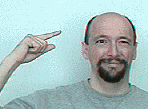
II.
Vicious Cycle
The more we succumb to our bad habit cycles, the more hopeless and depressed we’ll feel, and the more likely we are to adopt additional bad habits. Just as our thoughts and feelings prompt unwanted behaviors, our unwanted behaviors prompt more unwanted behaviors. In other words, bad habits can compound and spiral out of control. That, my friends, is what we call a vicious cycle.
Let’s explore what a vicious cycle might look like at a social outing:
As you can see, a vicious cycle consists of multiple bad habits that feed off one another. In this example, patterns of isolation, avoidance, drinking, and rumination are at play. Some bad habits may be stronger than others, causing us to get trapped in a cycle within a cycle. For instance, someone who enters a social event thinking they don’t belong might eventually find themselves stuck in a stronger cycle of scrolling, drinking, and ruminating. Here’s how that might unfold:
While these vicious cycle illustrations primarily highlight spiraling unwanted behaviors, it’s important to remember that actions don’t occur without preceding thoughts and feelings. So, technically, the vicious cycle actually looks something like this:
III.
Driving Force
When we summon the courage to confront our bad habits, we often start by attempting to “fix” the unwanted actions or behaviors. For example, if you have a bad habit of excessive drinking, you might try removing all alcohol from your home or avoiding places where it’s served. While eliminating temptation may slow down the bad habit, it’s impossible to avoid alcohol forever. As they say, “Every town has its share of saloons,” and “There are as many bars as there are street corners.” Even if you quarantined yourself to avoid outside temptations, Instacart now delivers beer, wine, and liquor directly to your door within two hours. Basically, you’re doomed.
The problem with tackling unwanted behaviors head-on is that our actions make up only a fraction of the total problem. Bad habits are a result of our patterned ways of thinking and feeling. It’s our thoughts and feelings that keep us trapped in vicious cycles and hold us back from living our lives.
So, where do these thoughts and feelings come from, and how might we change them?
Glad you asked.
IV.
Beliefs
You’ve probably heard of this thing called the “subconscious mind,” and if you’re being honest, you have no clue what it is. That’s because no one does; it’s not objectively real. There’s no organ or location within the brain that houses the subconscious mind. Rather, it’s a theoretical construct we use to describe mental processes that operate beyond our cognitive control. Essentially, “subconscious mind” is a label we slap on the operations that take place behind the scenes, behind our thoughts and feelings.
One of the functions attributed to the subconscious mind is the storage of our deep-seated beliefs. Subconscious beliefs often form from our early childhood experiences and societal conditioning. They are the reason why we don’t all think and feel the same way about things.
For example, someone who grew up feeling frequently rejected might develop a subconscious belief of inadequacy. When they arrive at a social event, they might instinctively think, “I don’t belong”—the very thought that can provoke a vicious cycle. Conversely, someone who believes they are worthy might enter the same event thinking excited thoughts and feeling hopeful. It doesn’t take a rocket scientist to figure out who will have a better time at the shindig.
Our underlying beliefs drive our thoughts and feelings and, therefore, our actions. When we try to “fix” our unwanted behaviors without addressing the way we think and feel, we may end up creating more problems or simply replacing one bad habit with another. That’s because two-thirds of the cycle—the thoughts and actions—remain intact. While we might physically remove a temptation we assume to be the problem, our core beliefs about ourselves and the world haven’t changed.
We can’t just fix our bad habits; we must fix our beliefs. We must choose to believe that we are worthy, strong, lovable, kind, competent, valuable, resilient, forgiven, learning, and growing. We must choose to believe that we are capable of adopting new beliefs, and we must practice accepting them. When we replace harmful beliefs with kind, productive, and honest ones, our old habits will naturally fade as they no longer align with our new belief system. When we stop thinking “I don’t belong” and instead believe in our own worth, we won’t fall into patterns of self-isolating and avoiding people.
To break the cycle, we must be willing to change from the inside out.
V.
Virtuous Cycle
Our brains are constantly seeking ways to minimize cognitive load by gravitating toward easier, less energy-consuming activities. That’s why brains prefer habits and automatic behaviors, as they require less conscious thought and effort. While cycles emanating from negative beliefs can cause us suffering, cycles originating in positive beliefs can make our lives a whole lot better.
Have you ever met someone who always has a can-do attitude, exercises regularly, eats well, reads often, excels at their job, never complains or gossips, goes to church, sleeps like a baby, has wholesome friendships, and makes time for family? These people used to drive me crazy. I wondered, “How do they do it? How can they be so productive and healthy and goddamn happy?”
Then it dawned on me: They chose to be.
These people choose to hold positive beliefs about themselves, others, and the world. And by doing so, they instinctively think positive thoughts and feel positive feelings. When you think good and feel good, you don’t do bad things. Positive people don’t fall into vicious cycles because they don’t experience the negative thoughts and feelings that lead to unwanted behaviors. Instead of falling into vicious cycles, they find themselves in virtuous ones.
The most mindboggling thing about virtuous cycles is that you’d think the best thing about them is that they come with all these good behaviors that make you productive and healthy and well-rested, but really, the best part is that positive thoughts and feelings make you feel so damn good. And that’s the greatest reward of all.
PS: Apologies for the delay in publishing this article; had to overcome a cycle of procrastination.

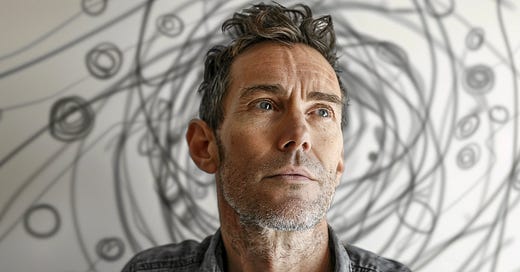


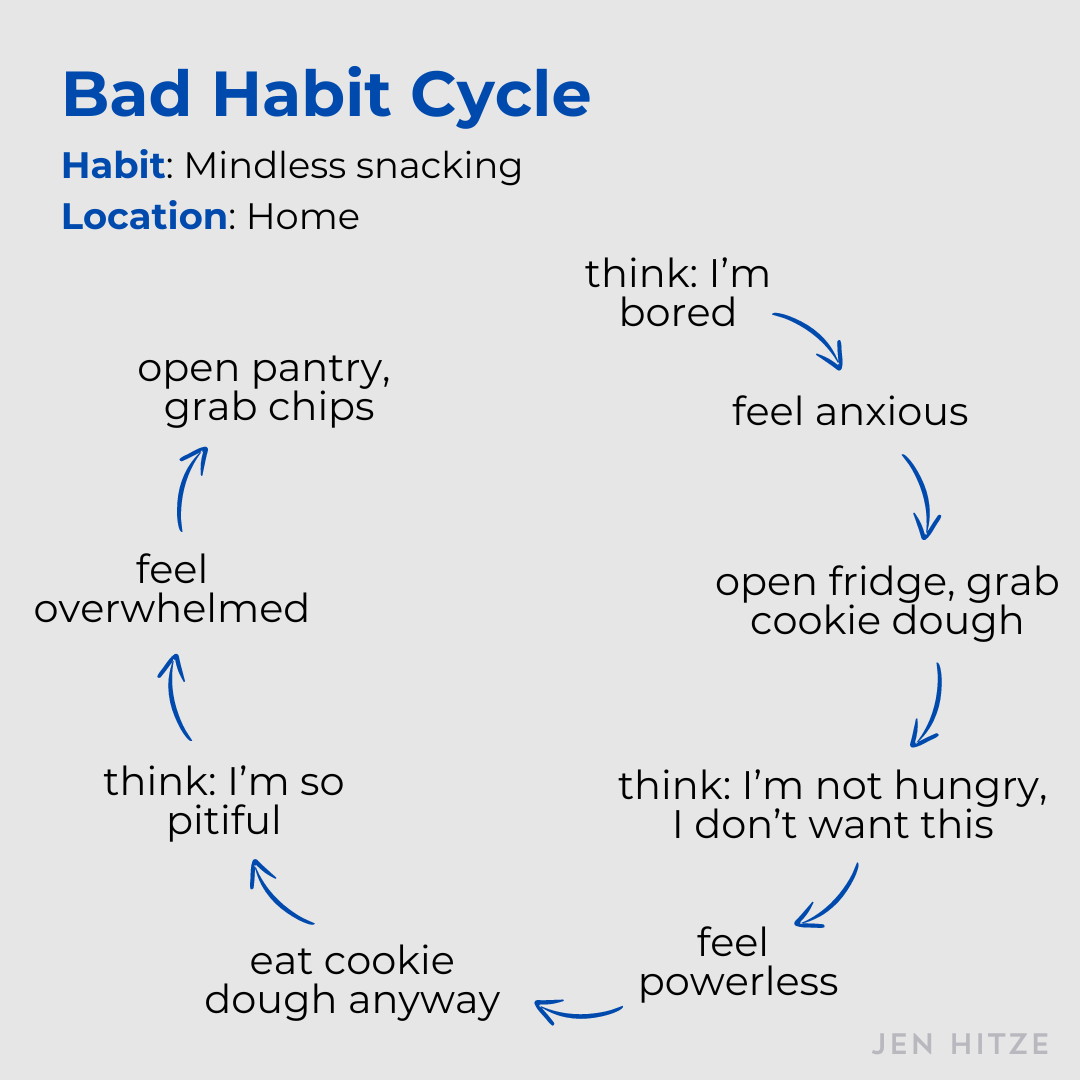
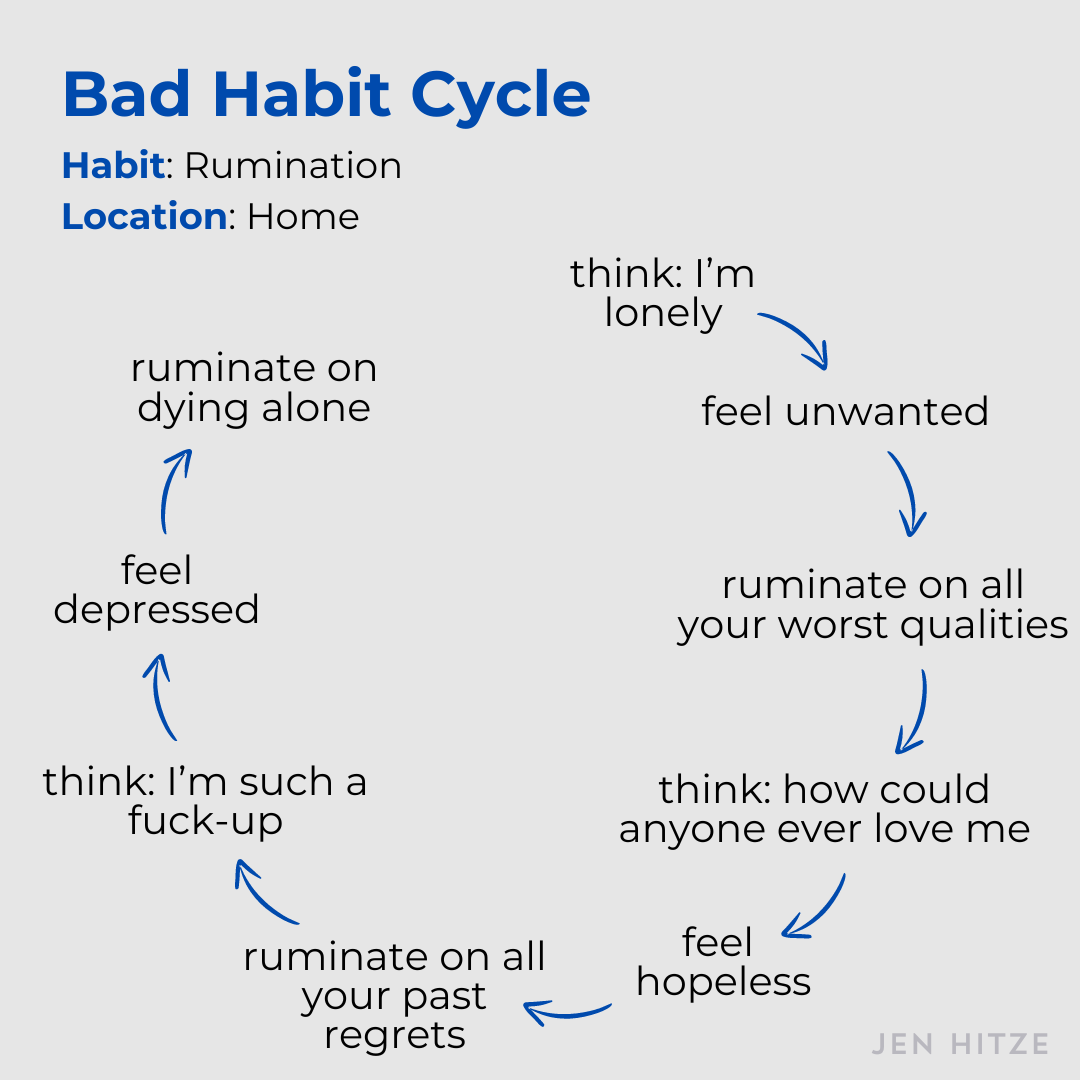



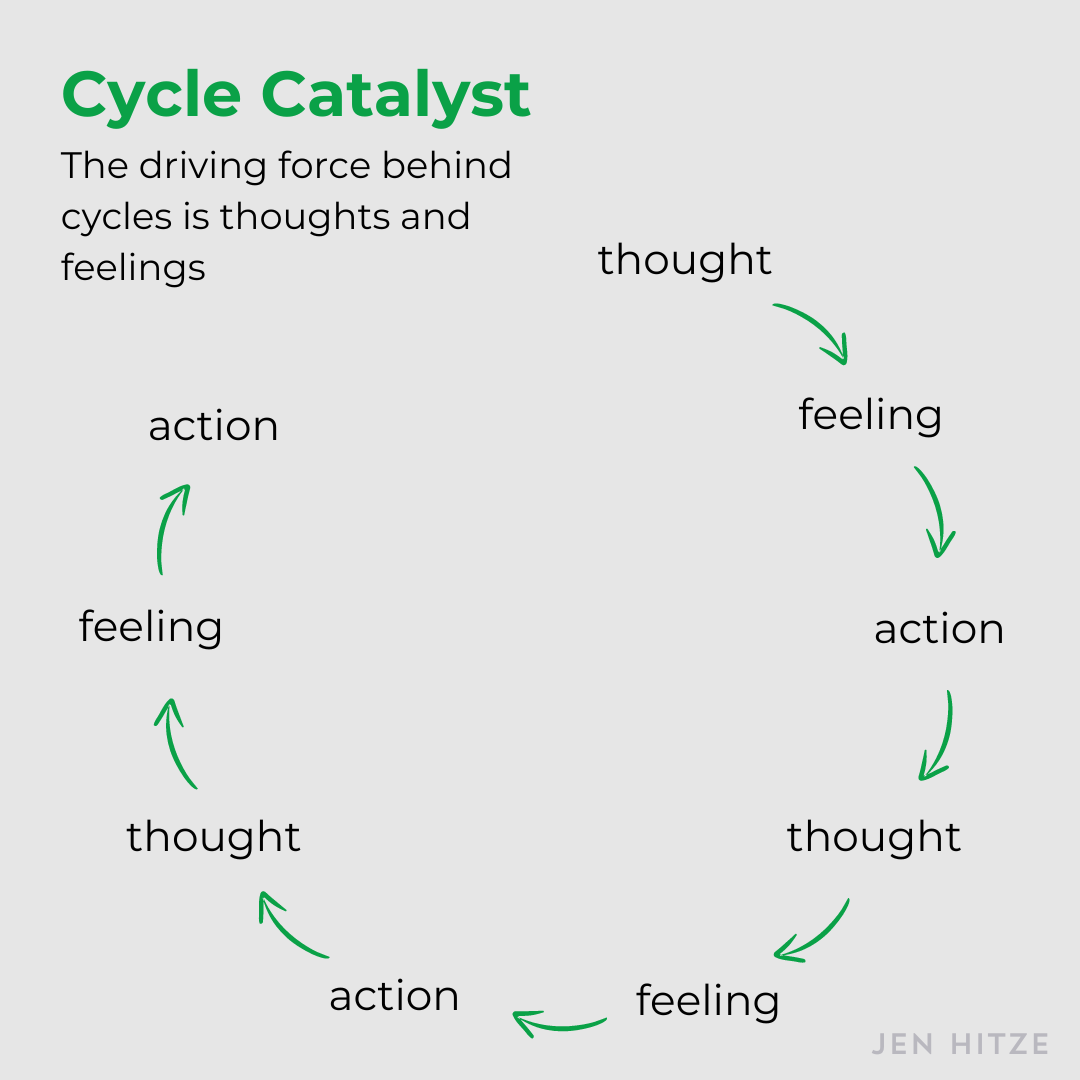
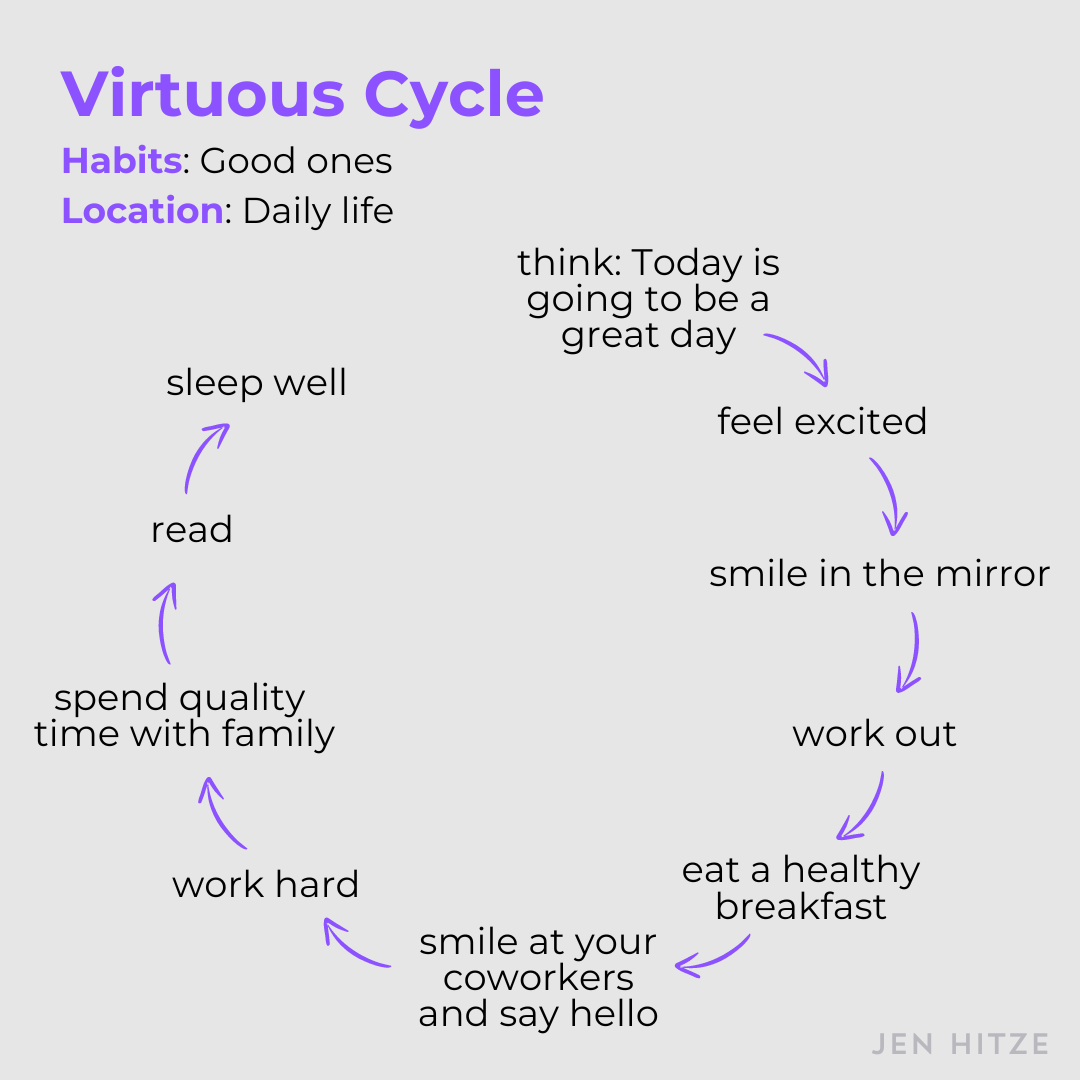

Powerful! So often we get into these vicious cycles to avoid feelings we don’t want to feel. Sometimes I’ll intentionally pause and just feel the feeling. It doesn’t feel good obviously, but it sometimes helps me understand any deeper reasons behind negative cycles or patterns. The best part about getting into a virtuous cycle - love that term, never heard it before - is that it’s as self-reinforcing as the negative cycle. I’m definitely guilty of going to a party already feeling like an outsider, so that graphic definitely hit home. :)
Nice article, Very well written. The breaking of the vicious cycle to the virtuous cycle stats with "You" and most important is the positive thought. Positive thoughts translated to Positive Action produce Positive Outcomes